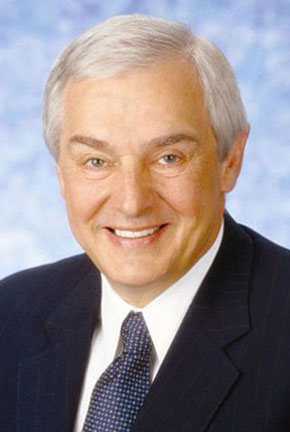
EL CAJON, Calif. (BP) — Visitors to London’s Westminster Abbey are transfixed by one tomb containing the remains of two women — sisters who were rivals in life but united in death.
Queen Mary is known to history as “Bloody Mary” because of the repressive persecution and martyrdom of Protestants in England during her reign. When she died, her half-sister Elizabeth I, a Protestant, became queen. Elizabeth was none too friendly with the Catholics during her long reign. Today, more than 400 years later, they are closer in death than they ever were in life, for they are buried together in one grave, which is marked by a Latin inscription reading (in English): “Partners in throne and grave, here we sleep. Elizabeth and Mary, in hope of the Resurrection.”
It was the see-sawing vacillations between religious factions during the 16th and 17th centuries that set the stage for the Pilgrim Fathers to seek out a new world for the exercise of their religious freedom. Those seeking to purify the church (the Puritans) were caught in the middle and opposed by both sides.
Eventually one group of faithful liberty-loving believers gathered in the small village of Scrooby in the Nottinghamshire region of central England. With great courage this group of religious dissenters declared themselves independent of the national church and of the monarchy’s jurisdiction as it related to spiritual matters. This was treasonous in its time, and soon informants were reporting to authorities about the Scrooby meetings, bringing harassment and persecution on the heads of the dissenters.
Most of the Scrooby worshippers fled to the Netherlands where they enjoyed the freedom to self-govern their churches and lives, first in Amsterdam and later in Leyden. Over time, however, Holland, too, posed problems for these wayfarers. The English felt themselves in a cultural no-man’s-land. They wanted to retain their English identity, but as their children grew they were speaking Dutch and being assimilated into the Dutch culture.
What to do? To return to England was dangerous; to remain in Holland was untenable. These worshippers began to discuss something outlandish and dangerous — to cross the ocean to establish a village on the deserted and inhospitable shores of America. It’s still traumatic to us today to think of relocating our families to another nation, but to these Pilgrims the journey must have been akin to traveling to the moon. They were literally going to another world — a new world.
In 1620, the Pilgrims set sail on the Mayflower, and for more than two months they made their home aboard the storm-tossed, disease-ridden boat. Because of the onset of a New England winter, the travelers stayed aboard ship until the following March, then disembarked.
Leaving its passengers to fend for themselves, the Mayflower returned to England. Meanwhile the new residents of Plymouth Colony scrambled to get their lives, homes and gardens organized during the short summer of 1621. They were aided by the timely arrival of Native American helpers such as Squanto and Massasoit.
When the first harvest began to be gathered that fall, the pilgrims and Native Americans gathered for a festival of thanksgiving, which set the stage for subsequent annual Thanksgiving observances around the world.
William Bradford wrote about that original occasion: “Thus they found the Lord to be with them in all their ways, and to bless their outgoings and incomings, for which let His holy name have the praise forever, to all posterity. They began now to gather in the small harvest they had, and to fit up their houses and dwellings against winter, being all well recovered in health and strength and had all things in good plenty.”
Have you ever traced the practice of thanksgiving in our Lord’s life? He thanked God when His teachings were received by the humble (Matthew 11:25); before He fed the five thousand (Matthew 15:36); before He fed the four thousand (Mark 8:6); at the Last Supper as He took the cup (Matthew 26:27) and the bread (Luke 22:19); and before the rising of Lazarus (John 11:41).
The biblical story is full of exhortations to thanksgiving, and Christian history is filled with examples of stalwart saints like the Pilgrim Fathers who did just that.
Try it right now. Start your journey each day seeking ways to thank your Heavenly Father.

















